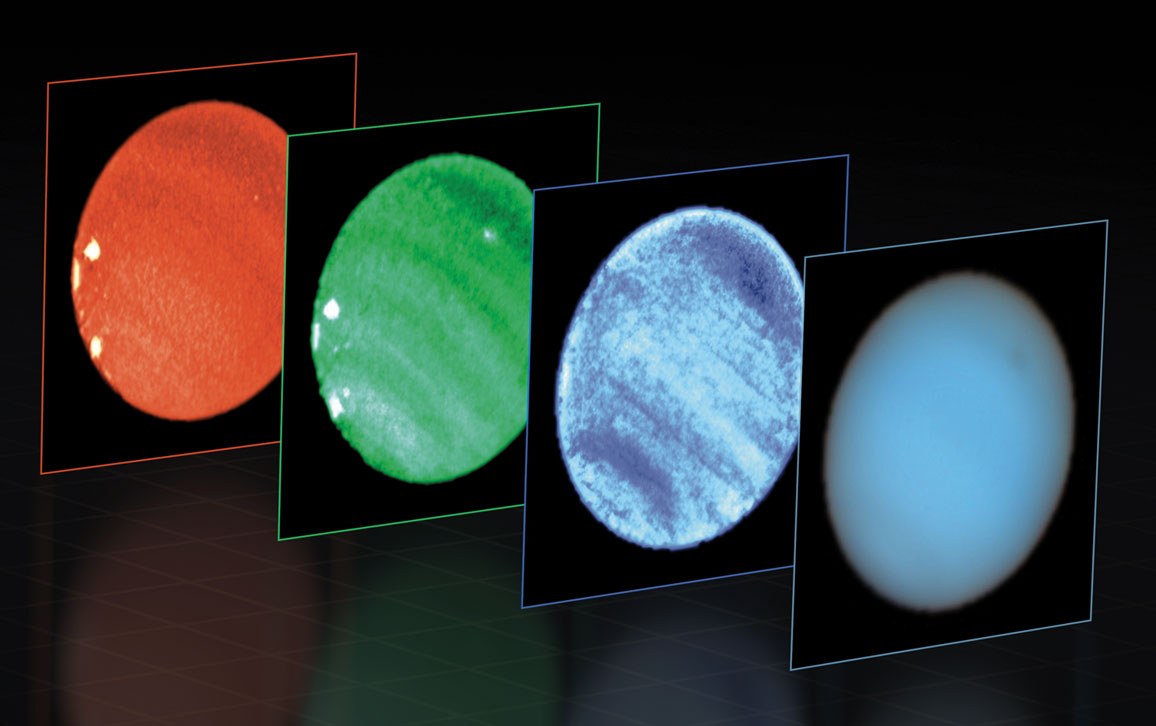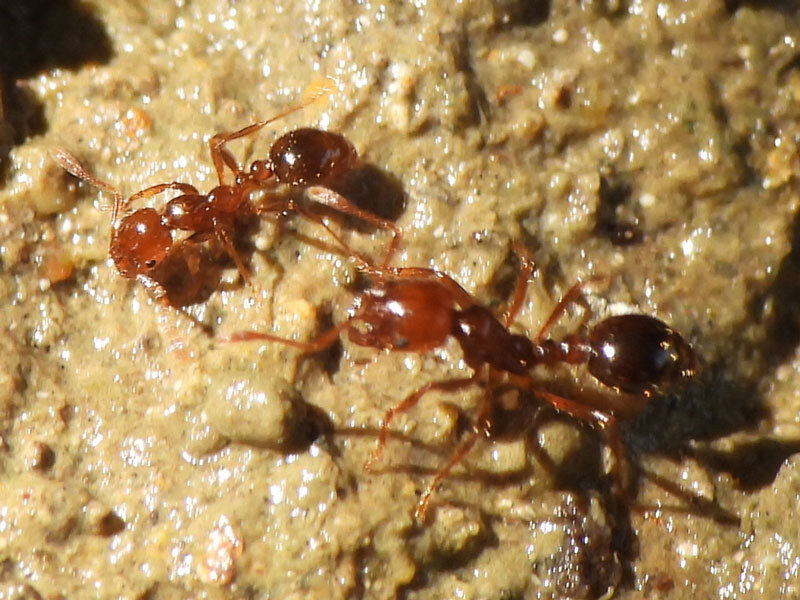
This Article From Issue
November-December 2023
Volume 111, Number 6
Page 336
In this roundup, managing editor Stacey Lutkoski summarizes notable recent developments in scientific research, selected from reports compiled in the free electronic newsletter Sigma Xi SmartBrief: www.smartbrief.com/sigmaxi/index.jsp
Neptune’s Cloudy Weather
For the first time, Earth-bound astronomers have peeked beneath the surface atmosphere of the Solar System’s most-distant planet to understand the roots of its extreme and surprisingly dynamic weather. A team led by physicist Patrick G. J. Irwin of the University of Oxford used the European Southern Observatory’s Very Large Telescope (VLT) to capture images of a 10,000-kilometer-wide dark spot on Neptune’s northern hemisphere.

ESO/P. Irwin et al.
They paired the VLT with a tool called the Multi-Unit Spectroscopic Explorer, or MUSE, which takes images at multiple wavelengths. Each wavelength probes at a different depth, and together they create a composite 3D image. MUSE revealed that the dark spot is composed of icy, hazy air particles in a layer beneath the outer atmosphere. This finding rules out a previous theory that the dark spot is caused by clearing clouds. MUSE also uncovered something unexpected: a bright spot next to the dark spot. The bright spot is at the same depth as the dark spot but had not previously been identified, even by space-based telescopes, and appears to be a new type of cloud. The team’s discoveries using MUSE show new ways to use remote sensing from Earth to study the intense and complex weather systems on distant planets.
Irwin, P. G. J., et al. Spectral determination of the colour and vertical structure of dark spots in Neptune’s atmosphere. Nature Astronomy doi:10.1038/s41550-023-02047-0 (August 24).
Mental Toll of School Closures
Parents’ and educators’ anecdotal evidence of the psychological toll of school closures on children during the COVID-19 pandemic now has the backing of data. Researchers led by economist Christina Felfe of the University of Konstanz in Germany used the German school system as a natural experiment to study the effects of school closures on children aged 11 to 17. They found that longer school closures correlated with worsening mental health measures, especially among boys, younger adolescents, and those living in close quarters. Each of the 16 German federal states manages their public schools independently, so although all of the states closed their schools between March 16 and March 18 of 2020, the reopening dates ranged from April 20 to June 15 of that year, and return-to-school strategies varied. The researchers merged information on school closures with mental health data collected by German national health surveys of 11- to 17-year-olds. They first compared responses from students at different grade levels in the same state to isolate any state-specific variables and then looked at students at the same grade level in different states to assess age-specific variations. The team found that each additional week of school closure was associated with a decrease in measures of the students’ health-related quality of life, and longer closures correlated to prolonged mental health disorders. These findings support the need for ongoing mental health services for school-age children and may help shape education policies in the case of a future pandemic.
Felfe, C., et al. The youth mental health crisis: Quasi-experimental evidence on the role of school closures. Science Advances 9:eadh4030 (August 18).
Fire Ants Cross the Atlantic
The invasive species Solenopsis invicta, commonly known as the red imported fire ant, has established a colony in Sicily, marking the first mature population in Europe. These insects threaten the local agriculture and ecosystems—a 2021 study in Nature ranked them as the fifth most costly invasive species—and their painful bites can cause severe allergic reactions in some people.

Wikimedia Commons
A team of Spanish and Italian biologists documented 88 nests over 4.7 hectares in eastern Sicily. The species has reached Europe at least three other times but was intercepted before it could spread; however, the size and range of the Sicilian colonies mean that eradication is not likely to succeed. Approximately 7 percent of Europe currently has environmental conditions in which the ants would thrive; however, global climate change could extend the habitable area to 25 percent of the continent by 2050. Red imported fire ants are native to South America but have spread to Mexico, the United States, the Caribbean, Australia, and parts of Asia. They hitch rides on boats and plants and are also dispersed by the wind, which can carry queens on their flights to establish new colonies.
Menchetti, M., et al. The invasive ant Solenopsis invicta is established in Europe. Current Biology 33:R879–R897 (September 11).
Uncovering Pompeii’s Slaves
An addendum to the saying “History is written by the winners” might be “and by the elite,” because those groups have historically had the education to record their affairs and the money to buy objects that survive as artifacts. So the 2021 discovery of Roman slave quarters in the villa of Civita Giuliana outside Pompeii was a coup for historians, and new findings from the excavation add nuance to our understanding of slavery in the Roman Empire. Two rooms, preserved in ash from Mount Vesuvius’s eruption in 79 CE, provide a glimpse into the lives of their enslaved inhabitants. One room had three beds, one of which was short, perhaps for a child. The inhabitants slept on ropes tied into loose netting, similar to the design of many modern hammocks. The other room had a similar rope bed and also another, more comfortable bed that would have had a mattress. The archaeologists theorize that this bed may have belonged to a higher-status servant. Neither of the bedrooms nor the nearby stable had bars on the windows or locks on the doors to keep the slaves imprisoned, which suggests that the villa’s owners used other methods of control—the researchers suggest that the close quarters and the presence of the higher-status servant may have encouraged the slaves to police each other. Slavery was an important aspect of Roman society, but most accounts come from the perspective of the ruling class. These bedrooms inform historians’ understanding of how Roman slaves lived and the mechanisms for control slaveowners employed.
Zuchtriegel, G., and C. A. Corbino. Of mice and men: New discoveries in the servants’ quarters of the Roman villa of Civita Giuliana near Pompeii. Scavi di Pompei 5 (August 20).

American Scientist Comments and Discussion
To discuss our articles or comment on them, please share them and tag American Scientist on social media platforms. Here are links to our profiles on Twitter, Facebook, and LinkedIn.
If we re-share your post, we will moderate comments/discussion following our comments policy.